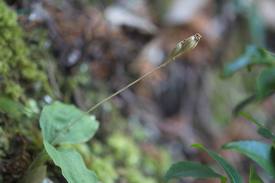|
This is a large group of hardy herbaceous plants, of which few are in cultivation. They are found wild in parts of Europe and Asia and some are naturalized in North America. N. Faassenii, the Mauve Catmint, is a popular kind that has somewhat spreading growth. Their thin stems are covered with gray leaves and it produces a lot of small lavender-blue or pale mauve flowers mainly in June. When in full bloom, Catmint reaches a height of 18 inches. N. Cataria, Catnip, is the well-known treat that cats love. This upright, sturdy, hardy perennial grows 2 to 3 feet high and has gray-green, downy leaves and white flowers. N. hederacea is commonly known as Gill-over-the-Ground or Ground Ivy. This hardy creeper is naturalized in North America on banks and shady roadsides. It forms carpets of small, heart-shaped leaves and, in the summer, produces spikes of blue flowers.
Pot Cultivation
These plants will thrive in regular, well-drained garden soil, but in clayey ground that becomes very wet during the winter, will most likely die after the first summer. If your ground is full of clay, add a lot of compost and grit or sand. This plant does prefer light soil and a sunny spot. Catnip should have well-limed soil. Catnip is very pretty when young, but soon develops tall, stiff stems that become leggy. At this time, prune them back to make them look neater. Cut off the flowers before they set seeds, or it will become a weedy pest. Cut off the flowers of Catnip and spread them out to dry in a dark, well ventilated area.
The flavor of Catnip is better than its rank smell. It may be used to make a soothing tisane. Rub the dry leaves lightly in a colander to remove the stems and release more flavor. Young leaves can be chopped to give a minty flavor to sauces. In moderation, Catnip isn't dangerous, but too much can have hallucinogenic effects.
Propagation
Cuttings can be made of small flowerless side shoots, about 3 inches long. The best time to do this is June or July. Remove the lower leaves and cut beneath a joint. Insert these in sand or sandy soil, water them and place in a cold frame, which is kept closed and shaded from direct sunshine. Moisten them once in a while with a fine mist. Transplant them before the roots become tangled with each other. Mauve Catmint can be increased by division in April. Split the clumps into tufts of about six shoots. Trim the woody roots off and replant. When the flowers have died, the plants should be trimmed into shape. Seeds of N. Cataria, Catnip, are started in early spring indoors and transplanted to a sunny or partially shaded spot after danger from frost has passed.
 |
 |
N. spicata |
N. nervosa |
Varieties
- N. Faassenii (Mauve Catmint) & variety Six Hills Giant.
- N. nervosa;
- N. spicata;
- N. Souvenir d'Andre Chaudron;
- N. Cataria (Catnip);
- N. hederacea (Gill-over-the-Ground or Ground Ivy).
|